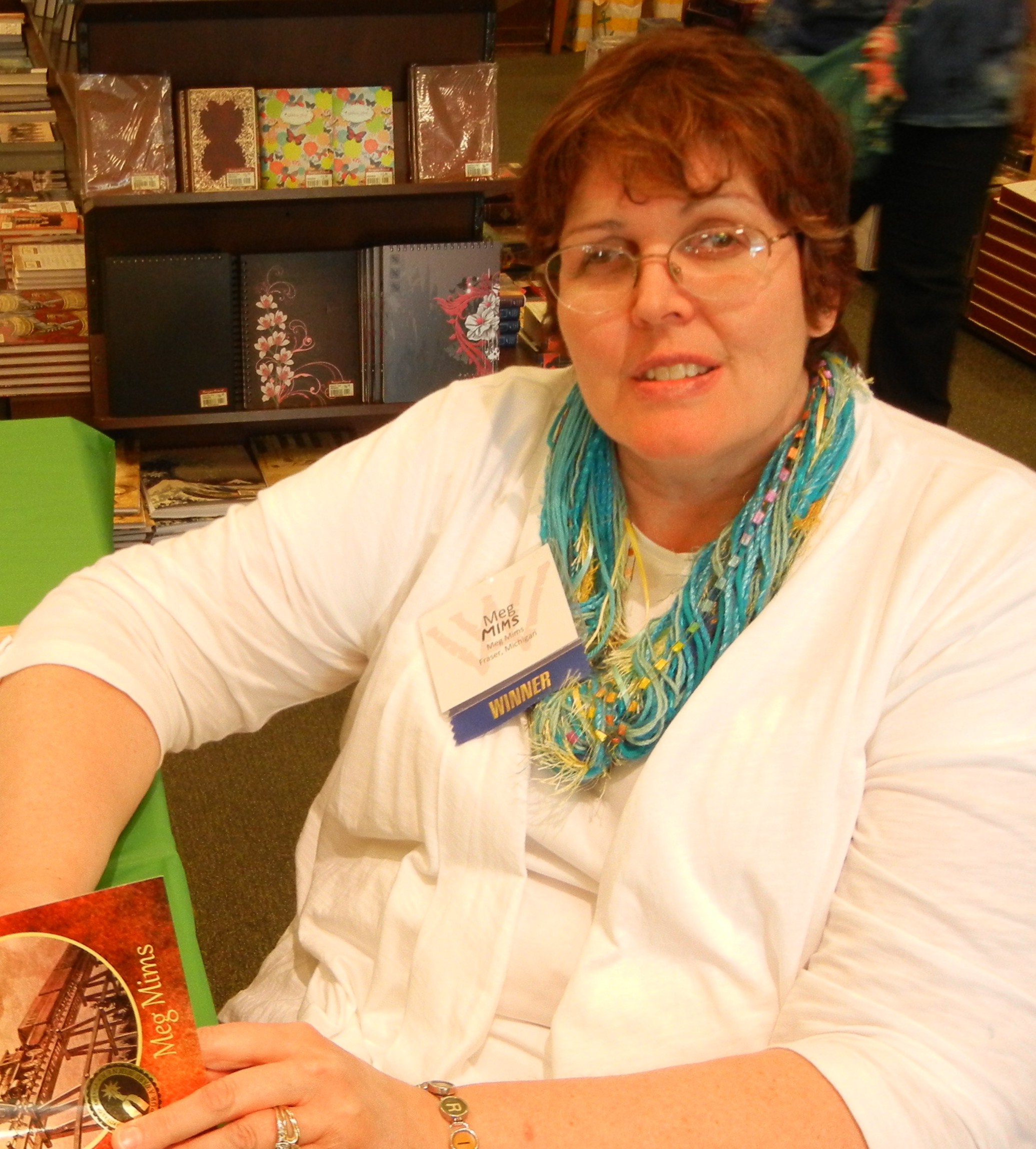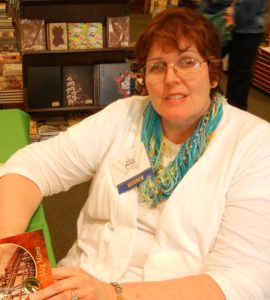Meg Mims is an award-winning author and artist. She was born and raised in Michigan and loves visiting lighthouses, small towns in the state, and the different lakes in and around the Great Lakes Region. Her passion for writing blended genres – like historical, western, adventure, romance, suspense and mystery helped earn her first book, Double Crossing, the 2012 WWA Spur Award for Best First Novel.
Ironically, Meg can’t ride a horse, has no idea how to shoot a gun, and has only been out west three times in her life. For those of you who want to grab a copy of Double Crossing, it is currently available from Astraea Press, Amazon and Barnes & Noble in eBook and print. Meg also wrote a contemporary romance novella, The Key to Love, published in February 2012.
Meg grew up reading the Little House series, the Boxcar Children, and Snow Treasure by Marjorie McSwigan. She was greatly influence by To Kill A Mockingbird for its lyrical storytelling, its message, and its strong sense of justice/injustice.
Meg self-proclaims that she is always writing; whether it’s non-fiction for Lake Effect Living or for an area Real Estate company, along with her fiction novels. When she does come up for air, Meg loves to read and play board games with family and friends, visit museums, gardens, the State parks and the family cottage on Lake Huron.
MTAR was ecstatic to have the opportunity to gain insight in to the intriguing mind of Meg Mims and felt her readers and diehard fans would enjoy in the in-depth glimpse of Meg’s career.
MTAR: What inspired you to write your first book?
Meg: The movie True Grit with John Wayne planted a seed when I was a young teen. I loved watching western movies and TV shows with my Dad, so writing a historical western seemed to come naturally to me. I considered Double Crossing as a “historical” without realizing there was a huge genre out there of other western writers, so imagine my surprise when it won Best First Novel for the 2012 Spur Awards from Western Writers of America! I figured that placing in the contest was a long shot.
MTAR: What is your favorite theme/genre to write about?
Meg: One trope of the mystery genre is hands-down — “justice must be served at the end.” There’s a reason we all feel “cheated” when a killer “gets off” for whatever reason in real life, but in genre fiction, readers definitely want to see justice done. Literary fiction is another matter – some novels I’ve read had an unsatisfactory ending. Give me a good genre mystery instead!
MTAR: How did you choose the genre you write in?
Meg: I love the historical genre, always have and always will. When I started reading Laura Ingalls Wilder’s Little House series, I “lived” that life along with her family. I also read Trixie Belden mysteries as a young teen, so I chose to BLEND the two together – voila, historical mystery! I have written a few historical manuscripts not set in the west, and am trying to get them ready for publication. I did get a contemporary romance novella, The Key to Love, published earlier this year. I wrote that on a whim to see if I could – and it has a bit of intrigue too!
MTAR: Do you work with an outline, or just write?
Meg: I’m not a “pantser” although I have done that and found the editing to be far more grueling. I prefer working up a detailed outline (depending on how much comes to me) and then progressing from beginning to end. I don’t like writing out of sequence either.
MTAR: Do you have a specific writing style?
Meg: I have a “vivid imagery” style where I try to include two or three sensory images while writing. Not in every paragraph, of course, but I drop them as “pearls along the path” to make it a more in-depth reading experience. I also write in an “ocean wave” method, where I start with an outline, the first few chapters (no more than five) and then go back, strengthening and tightening, before resuming. Every five chapters or so, I go back – so that I end up with a fairly decent “second draft” when I’m done with the book. But I’m a slow writer. I can’t rush things. Sorry, readers! I do love research, and I’m a stickler for getting things right.
MTAR: What was the hardest part of writing Double Crossing?
Meg: The hardest part was getting the historical details accurate.
MTAR: How did you come up with the title?
Meg: I choose titles that have meaning – and the train crossing the country teamed with a betrayal made Double Crossing a perfect choice. The sequel will be Double or Nothing which has its own meaning as well, since the main characters gamble with their lives.
MTAR: What was your favorite chapter (or scene) to write and why?
Meg: I loved writing the beginning of Double Crossing, because it really gets the story off to a strong start. I used the “theme” of True Grit where a young girl’s father is murdered (although I show that scene, while True Grit does not) but then I take it in a whole different direction. Plus Lily is nothing like Mattie Ross. She may be older at nineteen, but she’s definitely far more vulnerable.
MTAR: Do you have to travel much concerning your book(s)?
Meg: I’ve done several book signings due to the Spur Award (my local area, Albuquerque, NM, plus Pennsylvania, and I’m also heading to Sioux Falls South Dakota Festival of Books in late September) and plan to get more speaking gigs with book signings in the future. It’s all part of the job.
MTAR: Is there a message in your novel that you want readers to grasp?
Meg: That any woman, once she sets her mind to it, can accomplish even the impossible. Dream big, but keep your options open – and when things are at their worst, prayer does work.
We hope that you’ve enjoyed our interview thus far. In our next blog, we will talk with Meg about how she views her career, provide readers with her advice to new authors, and talk about her current and future projects. You won’t want to miss a single letter of her interview responses!


